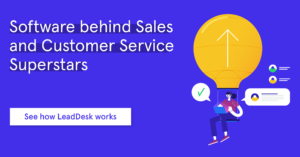Call center best practice - spot the 10 top agent time wasters
Wasted time is the enemy. Call center best practice shows us how to identify how agents waste time, fix the problems and close more deals.
schedule3 minute read
How many more deals would you close if your salespeople didn’t waste so much time? With the benefit of call center best practice, we can identify time wasting activities and poor time management, and we can take remedial steps.
Wasted time means less deals, lost deals, and lost business.
Wasted time is the enemy of the call center.
Wasted time is a battle worth fighting.
Let’s do it…
1. Talking, not listening
“Not listening is the number one most annoying thing salespeople do,” said Douglas Rice. Script reviews, team feedback sessions, call audio reviews and remote listening can all help identify and remedy inefficiencies.
2. “I’m just catching up”
Time that a salesperson spends checking old activity and looking over different contact histories is precious. Working with a timed preview dialer mode is the answer here.
3. Not taking “no” for an answer
The expression “flogging a dead horse” springs to mind. Of course, when a salesperson has put their heart and soul into a lead they don’t want to let it go. This can be costly. There is the time wasted on a customer with no potential, and this is often compounded by aggressive offers and discounts, which can reach other customers and bring down average deal value. Alerts for e.g. maximum contact time, time in funnel and contacts per agent can help identify problematic cases.
4. Too many follow-ups
A lot of time is wasted, not just on follow-up calls, emails and texts, but also on logging interaction data in systems. Ad-hoc follow-up activity also reeks havoc with call center metrics and KPIs. If your email open rate is falling, how much of that is due to improvised follow-up emails from over-enthusiastic agents. Scheduled callbacks, monitoring callback rates, nurture email sequences and integrating bottom-of-funnel sales support content can reduce the time agents waste on follow-ups and heat up leads.
5. Too many interruptions
Using personal email, staying close to a personal mobile, and jumping between messaging and email apps are obvious focus killers. They can also be signs of active disengagement. Unified systems, scheduled breaks, relaxation areas, and call center metrics that include software user data, are useful tools to combat these breaches in workflow.
Do you have an agent that gives personal contact info to customers, or work contact info to friends? Do you have a salesperson that wanders into personal interest topic areas on calls, or embellishes scripts with personal anecdotes? These could be signs of the most dangerous breed of interruption: when an agent is selling himself or herself, rather than the campaign.
Want to see a map of all center metrics, KPIs and goals?
Download the free info graphic now!6. Too much preparation
Tidying the desktop, filing digital documents, emptying digital trash, re-writing lists… These are all activities that call center agents can and should do before or after their call windows. Declining call times and increased handling times can be symptoms that agents are not focused. You need ways to increase agent engagement. Gamification is one answer, but don’t underestimate the power of personal contact and the human touch.
7. Not enough focus on referrals
If you don’t squeeze your evangelists to generate new high quality leads, you are going to waste time on lower quality leads in your lead pool. There are new customers that love your company or the products/services that you are selling. They can be the fast track to beating your targets. Tracking, valuing, and rewarding referral sales is call center best practice to save time and grow revenue in the long term.
8. Too many answering machines
In many campaigns, outbound call centers report over 40% of calls going to answering machines. Some high volume call centers report agents spending over an hour a day leaving voice messages. Pre-recorded messages and answer machine detection can be huge time savers.
9. Too close to “friends and family”
Salespeople tend to gravitate to the familiar. It’s human nature to be attracted to people with whom you have a good rapport. It is also common that salespeople get stuck targeting existing customers and take on the role of customer success or support. This can be a huge drain on resources. The remedy is to focus on prospects and, in advanced B2B, segment leads by potential customer lifetime value. Strong blended inbound and ticketing tools also help salespeople focus on sales.
10. Avoiding direct customer contact
Online sales research and scouring LinkedIn are easy activities. Firing off emails and texts are low effort and low stress. But at the coalface, sales involves direct contact: not only answering the hard questions, but getting leads to ask the hardest questions. The discipline of the hunt and the persistence required to keep calling are not traits everyone shares. In B2B sales in particular, lack of focus can be extremely costly. Account-based marketing tools can help but you have to allow for different characters and different approaches. As a team leader you need to see evidence that leads are moving down the funnel and accept no excuses.
Have you considered how much time could be saved by using an omnichannel software that integrates all contact channels into one easy-to-use interface? Read how an omnichannel software helps your agents close more.
Call center best practice: align your goals, KPIs and systems
Time management is one of the biggest challenges for call center managers. The new breed of data-driven contact center software is your greatest ally in defeating wasted time. Best practice is to have shared goals that your team understands, the right shared KPIs in place with achievable targets, and tools that fit your campaigns and don’t let you down. That said, it can’t be just about call center metrics. “When dealing with people, remember you are not dealing with creatures of logic, but with creatures of emotion, creatures bristling with prejudice, and motivated by pride and vanity.” (Dale Carnegie)
